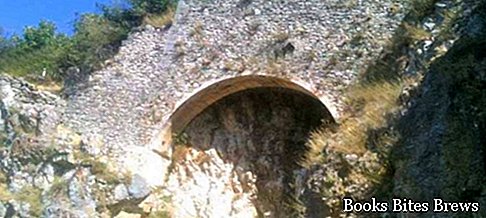What to see in Camerata Nuova, itinerary including the main places of interest, including Camerata Vecchia, Camposecco and the places where the film was shot called it trinity, to remember the arche of Camerata and the chop festival.
Tourist information
Located about fifty kilometers from Rome, within the Regional Park of the Simbruini Mountains and close to the border with Abruzzo, Camerata Nuova derives its name from the old village, destroyed by fire in 1859 and which was four hundred and ten meters more high compared to the 810 meters of altitude of the present town, characterized by houses, called camerae, partly carved in the rock.
In January of each year, to celebrate the memory of the day on which the destructive event occurred, the chop festival takes place, as according to tradition it was during the cooking of the chops that the fire developed.
From Camerata Nuova it is possible to reach the old village ruins through a pleasant walk, on foot or by mountain-bike, also in the locality of Camposecco you can see the places used to shoot the scenes of the famous film "Lo Chiamavano trinità" of 1970.
The ruins of Camerata Vecchia are located above on a limestone cliff located at the far eastern edge of a long ridge whose highest part corresponds to Monte Camposecco.
What see
Located at 1220 meters above sea level, the rocky coast where the ruins of Camerata Vecchia are present dominates the deep furrow of Fosso Fioio to the south, while the large karst plain of Camposecco is located to the north west.
Visiting these places it is inevitable to be fascinated by the sight of the ancient walls, inside which, until 1859, the locals lived.
In addition to the ruins of the city walls, the support arch of the Church of San Salvatore, some houses located near the church and the remains of a small temple remain in Camerata Vecchia.
By ancient tradition, the arcs are built in Camerata Nuova, that is, the characteristic chests used as containers for food, clothing and work tools.
The skilled craftsmen who make them are commonly called arches, the wood used is that of beech, available in abundance around the town.
As for the processing, the arcs are created without using screws or nails, but exclusively by fitting wooden strips together, a method that allows each work to give a unique appearance.
Recommended readings- Anagni (Lazio): what to see
- Lazio: Sunday day trips
- Vetralla (Lazio): what to see
- Ciociaria (Lazio): what to see in the historic region
- Alatri (Lazio): what to see
These particular containers, which were quickly dismantled and reassembled, proved particularly useful on the occasion of the fire in 1859, to secure everything that could be collected and saved.




